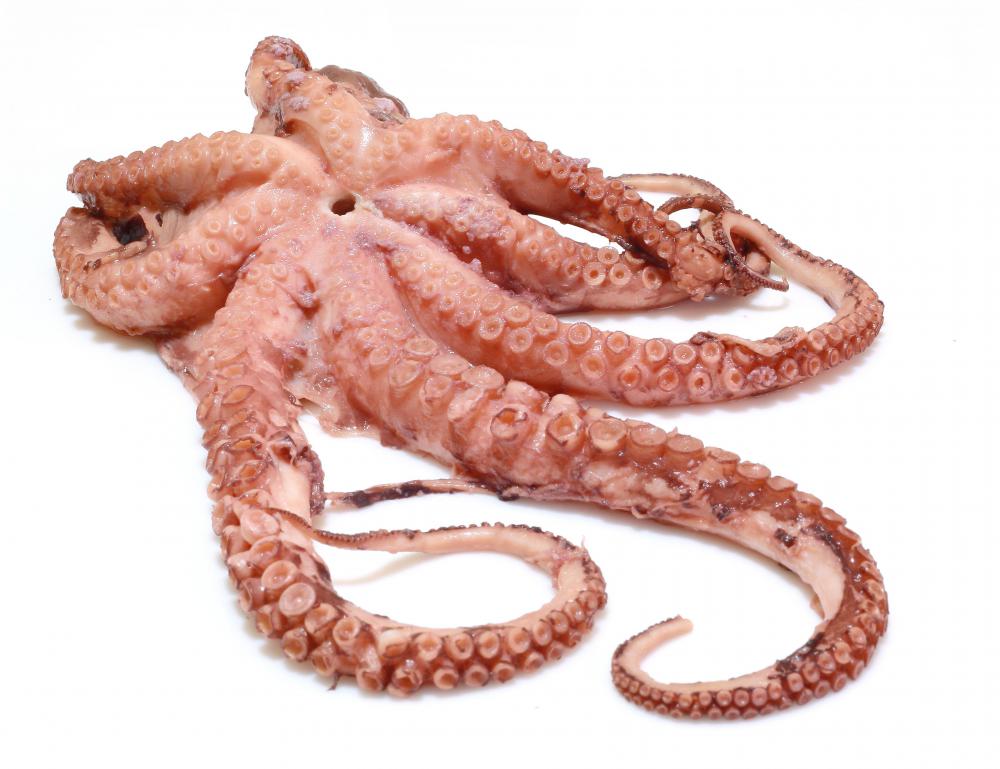At DelightedCooking, we're committed to delivering accurate, trustworthy information. Our expert-authored content is rigorously fact-checked and sourced from credible authorities. Discover how we uphold the highest standards in providing you with reliable knowledge.
What Is Kamameshi?
Kamameshi is a Japanese rice dish made by boiling seasonal ingredients, typically including fish or chicken, with rice grains. Traditional kamameshi is made in individual iron pots, called kama, that are heated over an open flame. It can also be prepared in more traditional stove top pans, as well as in electric rice cookers. The most important thing is that all ingredients are allowed to simmer and cook together.
Rice dishes are popular in Japanese cuisine, as the grain is a locally grown staple. Unlike many other preparations, however, kamameshi centers not on rice with different ingredients added on top, but rather with different ingredients cooked in. The rice is boiled in a spiced broth along with bits of meat and vegetables to create a savory main course.

There are no fixed kamameshi ingredients. Most cooks use elements that are locally available and fresh. Chicken and fish are common additions, as are tofu, mushrooms, and eel. In many parts of Japan, the dish is one that predictably changes with the seasons.
A summer kamameshi typically contains soybeans, leek, sweetfish, and eel. Fall preparations often include mushroom medleys, ginko, and sometimes chestnut. In the winter, carrots are commonly paired with shellfish, particularly oysters, and octopus, while in the spring, bamboo shoots and ginger are dominant flavors.

Kamameshi is relatively easy to make, as the bulk of the work is in preparing the ingredients. Vegetables must be washed and chopped, and meats must usually be at least browned in order to ensure full cooking. Depending on the rice variety, soaking and rinsing may also be required.
There are many variations on kamameshi broth, but all usually contain some elements that are spicy, and others that are sweet. Dashi, a stock made with seaweed and fish, is commonly the base. Soy sauce, chili flakes, and other seasonings may also be added to taste. Chefs add all of the prepared ingredients to this broth, seal the pot, and turn up the heat.

In traditional kama kettle rice preparations, the bottom and edges of the rice crisp during cooking. This adds a smoky flavor and a crunchier texture to the finished product. Most of the time, kamameshi prepared in traditional kettles is made in individual servings, and is meant to be eaten directly from the pot.
More modern cooks often try to emulate this texture and presentation by quickly frying individual portions of kamameshi before serving, or increasing the heat on ordinary pans just before cooking is complete. To food purists, this kind of cooked rice is not kamameshi at all but rather is takikomi gohan. Takikomi gohan is a very similar dish made by cooking rice along with meats and vegetables in a sake or wine-infused dashi broth. This dish is made in batches meant to feed whole families and is generally fluffy and soft throughout — never crispy or burnt.
AS FEATURED ON:
AS FEATURED ON:













Discuss this Article
Post your comments